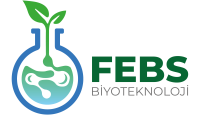Hydrolyzed Silk Peptide
Silk; It is obtained from the cocoon that the larvae of the domestic silk moth (Bomyx Mori) knit for their own metamorphosis, feeding on the leaves of the white mulberry tree.
Compared to fruits such as blackberries, cranberries and blueberries, which are known to be rich in antioxidant capacity, white mulberry contains 75% higher antioxidants. The chrysalis, which is fed with this rich source of antioxidants, gives this feature to silk.
The European Union focused on the use of silk protein in cosmetics in 2015 and created a safety assessment report. According to this report, they stated that silk peptides, which are found to be safe, are included in the FDA list for food consumption. Again, in the review titled “Bioactive Peptides Obtained from Food in Human Health: Challenges and Opportunities” by Chakrabarti et al. in 2018 for Nutrients magazine, he mentioned silk fibroin among the hydrolyzed peptides and stated that it is among the accepted additives in the FDA GRAS list and that such protein sources would be preferred for commercialization.
